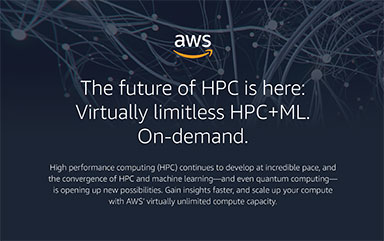Latest News
December 1, 2020
The onslaught of the COVID-19 global pandemic is accelerating the move to cloud-enabled engineering design, a shift already begun with the rapid evolution of digital transformation.
As we plan for 2021 and post-COVID recovery, software-as-a-service (SaaS) will become the norm for product innovation. Here are my predictions on how cloud-enabled product development will bring greater collaboration and faster responsiveness to meet changing market demands.
1.Cloud-enabled platforms will empower engineers to design from anywhere, in real time and from any device.
Until the COVID pandemic struck, product design still operated largely through traditional distributed global supply chains. Essentially, people communicated by sending large proprietary computer-aided design (CAD) files, Excel spreadsheets and/or PDFs to suppliers. This low-fidelity approach, however, is highly inefficient and prone to error. When design changes happen, you need to make sure that everyone has access to the updated information in the new version.
COVID has exacerbated this situation by limiting physical access for engineers to resolve issues or provide additional details necessary to ensure efficient manufacturing. The silver lining of COVID has been that people are beginning to realize that they can work with remote partners using new, cloud-based tools. The consequence of them working more efficiently is that is speeding up the tipping point of the adoption of cloud-based design tools.
In cloud-enabled product development, you get access to actual, live data, not some file or intermediate file format. If a design change occurs, you do not have to ask whether you are viewing the correct version – there is only one version. There’s no longer a requirement for separate viewing applications or third-party applications, which needed to be maintained and kept in sync with the underlying CAD application.
What’s more, there are no longer any worries over whether your PDM/PLM system has synchronized the local vault with other vaults. Simply log in using any standard browser and get immediate access to the right version. There’s no syncing at all, because everything is always in sync.
In fact, the transition to cloud-enabled design platforms reflect trends across all industries. In the second quarter of 2020, organizations worldwide turned to video and collaboration solutions. The reason? To meet work-from-home employee requirements during “an extraordinary time of crisis,” explained Rich Costello, senior research analyst, Unified Communications and Collaboration (UCC), at IDC.
In the second half of 2020 and into 2021, some organizations are starting to transition from the crisis phase of the pandemic to the recovery phase. Still, IDC indicates that interest is only intensifying in cloud-based solutions.
2. Freedom from the constraints of CAD workstations and inhouse infrastructure will promote business agility.
Managing the traditional CAD infrastructure—including hardware, graphics cards, network, software licenses, and so on—costs design departments a lot of extra time and money. The CAD overhead can be eliminated with cloud-based solutions and the extra resources can be deployed towards improving design, manufacturing, and collaboration processes.
The elimination of the frustration over dealing with all the issues surrounding the CAD environment allows users to free up their mental energy. They are “liberated” from being dragged down by the mundane, non-value-added activities.
The ability to make daily progress on work plays a major role in job satisfaction and a positive employee experience (EX), putting employee talent in the best possible position to drive business results. As a result, leaders “invest in tools, technologies, and resources that enable employees to deal successfully with the demands of their jobs,” Forrester noted in a recent report.
With cloud-enabled, browser-based CAD tools in place, product engineers using PCs and Macs in home offices around the globe can collaborate in real time on enhancing the latest version of a product design. A project manager or CEO can use a smartphone or tablet at any time of the day or night to check in project status.
3. The unlimited compute power of the cloud will accelerate product development.
If we take a look back at installed-base software, a lion’s share of the performance improvements were secured by leveraging Mohr’s law. Simply stated, the number of transistors double every two years. In addition, as an industry, we took advantage of central processing unit (CPU) clock speed acceleration.
Unfortunately, we as an industry ultimately succumbed to the laws of physics. Clock speeds reached an asymptote and chip density limits could not be exceeded. In response, the computing industry added multiple cores to help perpetuate the economic treadmill of Mohr’s law. Paradoxically, this actually created some performance headwinds for software not specifically engineered to take advantage of multiple cores (unfortunately, many engineering software packages were built prior to the advent of multi-core computers).
Fast forward and applications specifically designed for the cloud can take advantage of an unlimited amount of compute power, because they’re designed from the ground up to exploit horizontal scaling. Cloud platforms such as Onshape also leverage the local device graphical processing unit (GPU) rather than dedicated graphics cards to do the local rendering.
Finally, cloud applications are riding the wave of ever-increasing access and bandwidth speed. Ask yourself this easy question: do you think you’ll have better and speedier access tomorrow than you do today? The answer is an obvious YES and Onshape will take advantage of this.
4. The greater agility and productivity of the cloud environment will boost innovation.
We’ve already seen how market needs can change dramatically with the advent of a global pandemic. A sudden dire need for PPE equipment is just one of countless examples. When urgent calls went out for help last spring, engineers used our SaaS product development platform to design life-saving products on demand and collaborate in real time—while working from home. One example here is MasksOn.org. The team repurposed snorkel masks into reusable, sanitizable emergency use face shields and distributed them to the clinicians who did not have access to FDA cleared equipment.
Overall, I believe cloud-enabled design platforms will see significant adoption over the next five years.
So, how do you select a cloud-enabled product development platform? Here are my tips.
- Validate that the solution is a full cloud solution. Sign up and access should be instantaneous, with zero installation of any software.
- Make sure that the vendor has full SOC2, Type 2 compliance.
- Ensure the solution provider is being transparent about uptime/access by checking on status.vendor.com.
- Get started!
Entrepreneur and industry luminary John McEleney has spent his career transforming businesses, driving corporate strategy and forecasting what’s next in product development and manufacturing. With more than 30 years of experience in mechanical design and software, McEleney understands the innovation challenges customers face in today’s hyper-connected world, and helps them navigate the digital era. Cofounder of Onshape, he is now the corporate vice president of strategy at PTC.

More Onshape Coverage
More PTC Coverage
Subscribe to our FREE magazine, FREE email newsletters or both!
Latest News
About the Author
DE’s editors contribute news and new product announcements to Digital Engineering.
Press releases may be sent to them via [email protected].







